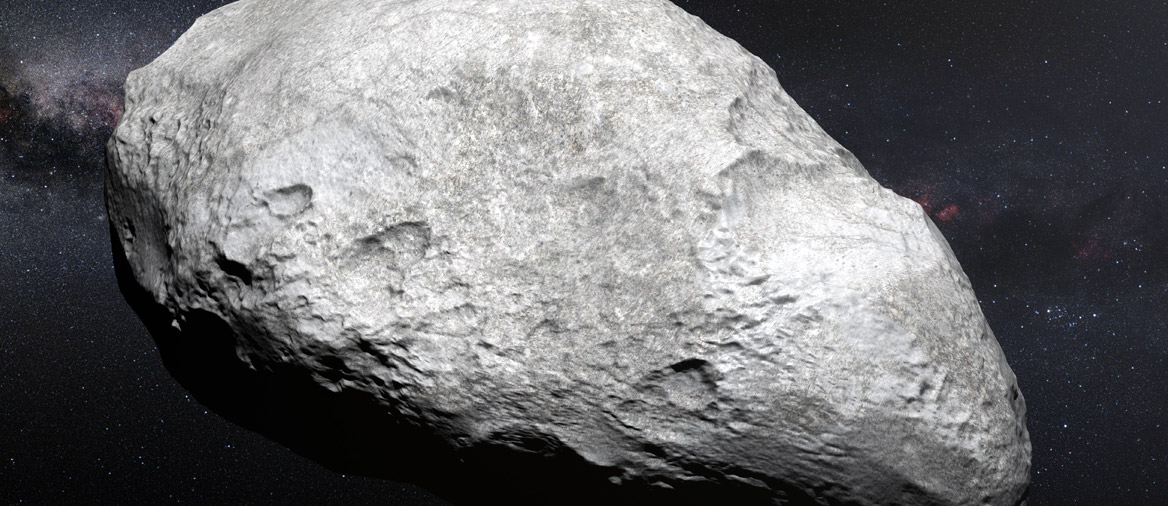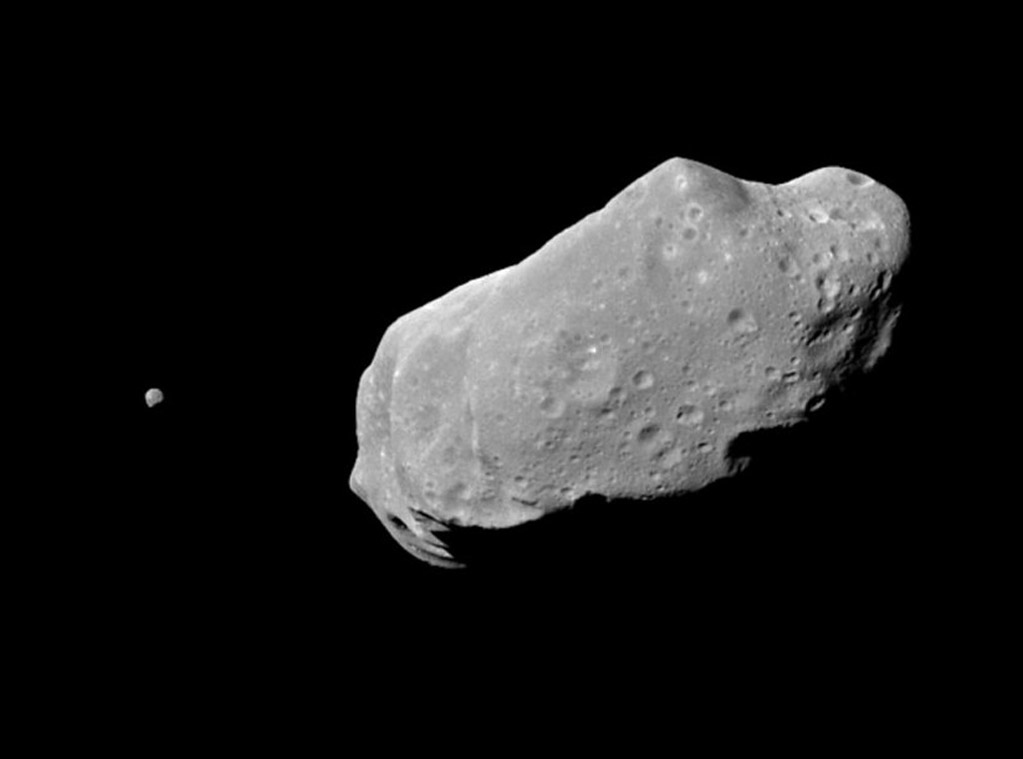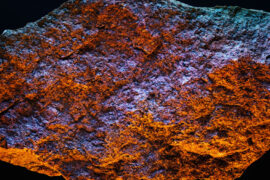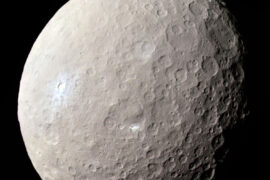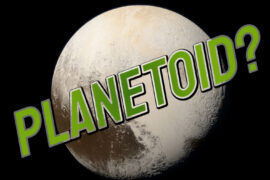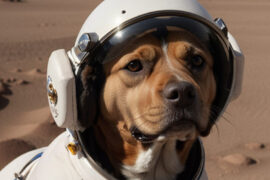How would you classify asteroids?
Classifying them by size doesn’t make much sense because asteroids are already a category of space rock defined by size. They are too small to be dwarf planets and too big to be meteoroids. Most asteroids already share a defined size range.
So, what makes some asteroids different from others? what could we use as features that could help us learn more about them?
Well, there are two ways to classify asteroids. First is by their composition, and the second is by their location in the Solar system. These classifications have been created by the International Astronomical Union, a worldwide non-government organization that is in charge of this kind of thing, and adopted as the leading authority in astronomy by scientists all around the globe, including those at NASA.
But why would you want to define the types of asteroids there are in the first place?
Well, as it turns out, there are more than one million of them measuring more than 1 kilometer (0.6 mi) just in the asteroid belt. And there are probably a few million more in the rest of the Solar system. Any one of them could cause catastrophic damage to Earth if for some reason they collided with our planet. The asteroid that caused the extinction of the dinosaurs was barely between 10 and 15 kilometers long.
So, for that and many other reasons like the possibility that at some point in the future, we could learn to do space mining and extract resources from asteroids, it is important that we learn more about them, classify them, and track them.
Asteroid types by composition
There are primarily three types of asteroids based on the main elements and materials they contain. These are M, C, and S
C-type asteroids
C-type asteroids are the most common type of asteroid. The C in their name is for two reasons, first for carbonaceous because of their high carbon content and second for Chondrite which is the other name they receive: chondrite asteroids. They get this name because they contain chondrules, which are tiny grain-shaped pieces that form when molten material cools down. C-type asteroids can be made of anywhere between 20% and 80% of chondrites.
These asteroids are mostly made out of silicate minerals, olivine, and pyroxene. They are mostly stone and contain very low percentages of metals like nickel and iron.
Chondrites are some of the oldest materials in the solar system and are believed to be the building blocks for planets.
There are about 27,000 C-type meteors on Earth that are believed to have been part of a C-type asteroid at some point.
S-type asteroids
Approximately 17% of asteroids are S-type, which makes them the second most common type.
The S in their name is for sillicate because they are stony and mostly made out of iron-sillicates or magnesium-sillicates.
Some of the largest asteroids in the asteroid belt are of this type and they are mostly located in the inner parts of it. Some of them like 4 Vesta and 3 Juno are even visible using home telescopes.
M-type asteroids
M-type asteroids are very interesting because some of them are thought to be remaining cores of early planets that never ended up forming completely. The M in their names is for metal as they have high concentrations of these materials, usually nickel and iron, but some can even have a bunch of precious metals like gold (See for example our article on asteroid Psyche 16).
This is the type of asteroid that people refer to when they talk about space mining.
M-type asteroids are believed to have formed close to the Sun and they would have had to been exposed to high temperatures in their early days. Some of them might have even had iron volcanoes at some point. These asteroids are also the source of the metallic meteorites that sometimes reach Earth, these meteorites are pieces that fell off after a collision of an M-type asteroid with another object.
This type of asteroid represents only about 5% of the total.
Notable M-type asteroids include 16 Psyche, 21 Lutetia, and 22 Kalliope.
Asteroid types by location
Asteroids can also be classified according to their location in the solar system. The 3 major categories are:
Main asteroid belt
This is the area where the largest asteroids in the Solar system are. It is located between Mars and Jupiter and it is believed to have formed because Jupiter is so big that its gravity stopped other planets from forming nearby, resulting in the fragmentation of the material into asteroids.
There are over 1 million large asteroids in the asteroid belt (larger than 1 kilometer or 0.6 miles) and there are millions more that are smaller than that.
Ceres, one of the asteroids in the belt is so big that it is considered both an asteroid and a dwarf planet. Check out our article about the 8 most famous and important asteroids for more on that.
Trojan asteroids
Trojan asteroids are very interesting. They get their name from a group of asteroids discovered in Jupiter’s orbit.
These asteroids share an orbit with a planet, but they don’t collide with it because they are located at very exact points of their orbits in the “Lagrange points” (approximately at 60° of the planet), forming a balance.
Jupiter is the planet with the most trojans in its orbit, so many have been discovered in recent years that it is now believed there could be as many as in the asteroid belt.
The rest of the planets only have a few trojans with the second place being taken by Neptune with 30. Earth has two called 2010 TK7, and 2020 XL5.
Near-Earth asteroids
These are asteroids that have an orbit outside the major groups. Their trajectory passes near Earth’s orbit and in some cases, it even crosses it.
Near-Earth asteroids are also commonly called NEOs (Near-Earth Objects) and there are currently 30,503 detected ones that are being constantly monitored as these are the one that represents the most danger to Earth. Most of them are asteroids, but a few NEOs can also be comets.
For an object to be considered a NEO, the closest point of its orbit (perihelion) to the Sun has to be less than 1.3 Astronomical Units (1 AU = the average distance between the Sun and Earth).
NEOs have their own sub-types that depend on the risk level they represent to Earth.
Summary
- Asteroids can be classified by their composition and orbit
- There are M-type (metallic), S-type (silicate), and C-type (carbonous) asteroids with the latter being the most common.
- Depending on their location, asteroids can also be classified into main-belt asteroids, trojans, and near-Earth objects.

